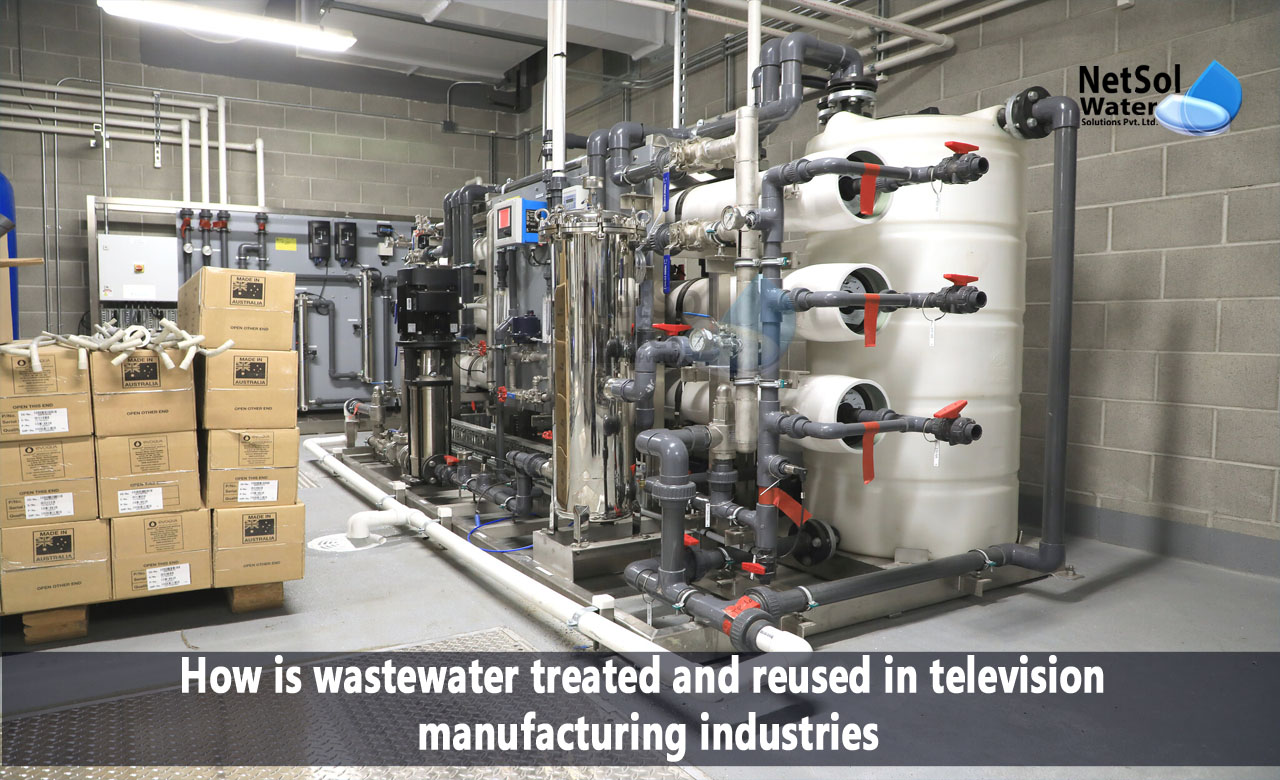How is wastewater treated and reused in television manufacturing?
The combination of RO and electrodeionization treatment might directly transform the television manufacturing washing wastewater, which is characterised by homogenous composition and low concentration, into ultra-pure water. It can be advantageous from an economic as well as environmental standpoint.
Now, let’s understand the treatment and reuse of wastewater in the television manufacturing industries.
Process of wastewater treatment in television manufacturing industries
1: The stripper {dimethyl sulphoxide (DMSO) and monoethanolamine (MEA)}, developer (tetra-methyl ammonium hydroxide [TMAH]), and chelating agents make up the bulk of the organic solvents. These substances are acknowledged as slow or non-biodegradable organic compounds, and very less is known about how biocompatible they are.
2: An A/O SBR (anoxic/oxic sequencing batch reactor) can be used to treat synthetic effluent. According to research, the A/O SBR is capable of removing DMSO, MEA, and TMAH at influent concentrations of up to 430, 800, and 190 mg/L, respectively.
3: Furthermore, batch tests can be carried out to examine the rates of DMSO, MEA, and TMAH degradation in aerobic, anoxic, and anaerobic environments, respectively.
4: The organic elimination accomplished by the MBR method can also be achieved. On average, more than 98.5% of the COD can be removed. The average removal efficiency for the TOC can be 97.4%.
5: The effective interception performance of a membrane device, integrated with the biological reactor, ensures the steady effluent quality and good removal performance.
6: We can get excellent water quality after RO treatment. Therefore, the treated water can be recycled and utilized again for other things, including cooling tower make-up water.
7: Following ozone or UV treatment, the treated water's COD and TOC concentrations are reduced respectively.
Other types of processes used for reuse of wastewater in the television manufacturing industries
1: The multi-media filter, which is frequently made of quartz sand, anthracite, and activated carbon block, can be used to remove contaminants from the raw water in the first phase, such as suspended solids, colloidal matter, bacteria, etc.
2: By pumping the liquid into the filter, the RO system's overall cost is decreased and its service life is improved, by removing tiny contaminants with a diameter larger than 1 micron.
3: RO membrane is used to remove contaminants such as inorganic salt, colloid compounds, and microorganisms under the pressure of the pump.
4: Electrodeionization is a process in which the filtered liquid is pumped, into an electrodeionization device to perform ion exchange. Following that, you might obtain ultra-pure water that satisfies the requirements for reuse.
How can we assist?
Netsol Water provides design and manufacturing services to create a unique wastewater treatment plant. Whether you require a wastewater treatment plant for commercial or industrial use, we will assist you in selecting the best solution as per your need and requirement.
Contact us right now to find out more about our water and wastewater treatment products and services. All kinds of chemical, physical, and biological impurities can be effectively eliminated by our treatment systems. For further information or to make a product purchase, contact us at +91-9650608473 or drop a mail at enquiry@netsolwater.com



